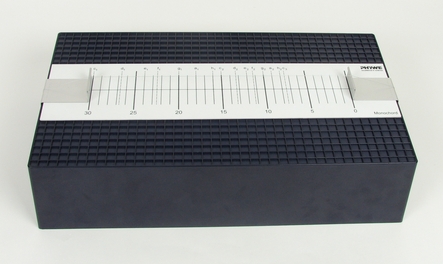Principle
Scales consist of notes of different pitches. The C major scale can be played perfectly on a piano since it requires only the white keys. On a string instrument (e.g. a violin) the pitch is determined by the length of the string. The distances between two successive notes are called intervals. In music, they have special names, e.g. third, fourth, and fifth. In this experiment, you will generate the tones with the aid of a monochord. It consists of a (resonance) box and a string. The length of the string can be varied by wooden bridges that can be placed under the string. As a result, the pitch will change.
On the monochord, the string lengths are measured for these intervals and the quotients (string length ratios) are formed. The intervals sound particularly harmonious for our ears when the numerator and denominator of the quotient are as small as possible.
The aim of the lesson should not only be to play a scale and the intervals but also to measure the string lengths of the intervals and to relate them to each other.
Benefits
- Experiment is part of an experiment set with a total of 22 experiments about generation, propagation and perception of sound, oscillations and waves
- Particularly appropriate as an experiment for first contact with physics in general
- With graphic student worksheets
- With detailed instructor information
- Optimized for tight schedules, i.e. minimum preparation time required
Tasks
Place the bridge under the string in the predefined places and listen as to whether the tone results in a harmonious sound with regard to the fundamental tone and what type of interval you have. Play a scale with the aid of the different marks. Examine whether there is a connection between the string lengths of the various different tones and the associated interval.
What you can learn about
- Pitch
- Intervall
- Monochord
- Fundamental tone
- Scale


